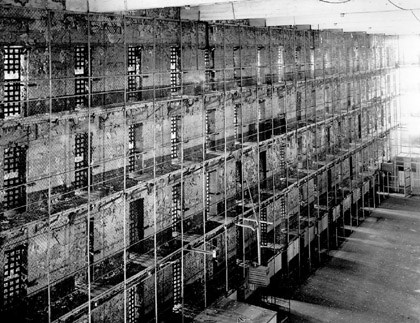Hidden Columbia: CCI Traditional Cache
-
Difficulty:
-

-
Terrain:
-

Size:  (micro)
(micro)
Please note Use of geocaching.com services is subject to the terms and conditions
in our disclaimer.
Micro hidden in a tree located in the Canal Side Park. There is a $2 bill for the FTF.

The wall you see behind the tree is what is remaining of the old Central Correctional Institution (CCI). The CCI once occupied this entire park area. Construction started on CCI in 1867. The penitentiary complex initially included two cell blocks and a structure for administrative offices. By the mid-1880s it was substantially complete and housed nearly 1,000 prisoners. When it was built in 1867, the five-story castle-like structure cost the state $65,000.
By the mid-twentieth century the penitentiary had become outdated. After more than a century of use, it was increasingly known for security problems and poor conditions. Officials began calling for CCI to be closed in the 1960s, but the Department of Corrections did not shut down the facility until 1994. The closing of the penitentiary after nearly 150 years of continual use was the final step in the process of decentralizing the state's system of penal institutions.
CCI was the first institution in SC to have and use the electric chair. It was that chair that was used to electrocute the first woman in South Carolina, Sue Logue, who had been found guilty of murder for hire in the death of her neighbor. In all, 243 inmate's sentences where carried out in the chair.

The prison's oldest section, Cell-block 1, was condemned in the late '80's. Its cells had floor space of only 5 by 6 feet and ceilings only 6 1/2 feet high. The walls were of 18-inch-thick granite and the door openings were only 25 inches across. Nevertheless, many inmates preferred Cell-block 1 because it often meant they could have private quarters.
But not always: in the 1970's, there were cases of as many as three inmates sharing one of those cells.



When the prison closed in 1994 prisoners left behind a wide variety of items, including toasters, radios, television sets, fans and about 50 cats that lived mainly in the prison yard.

The granite blocks you see in the park are from sections of the prison including Cell Block 1.
Additional Hints
(No hints available.)